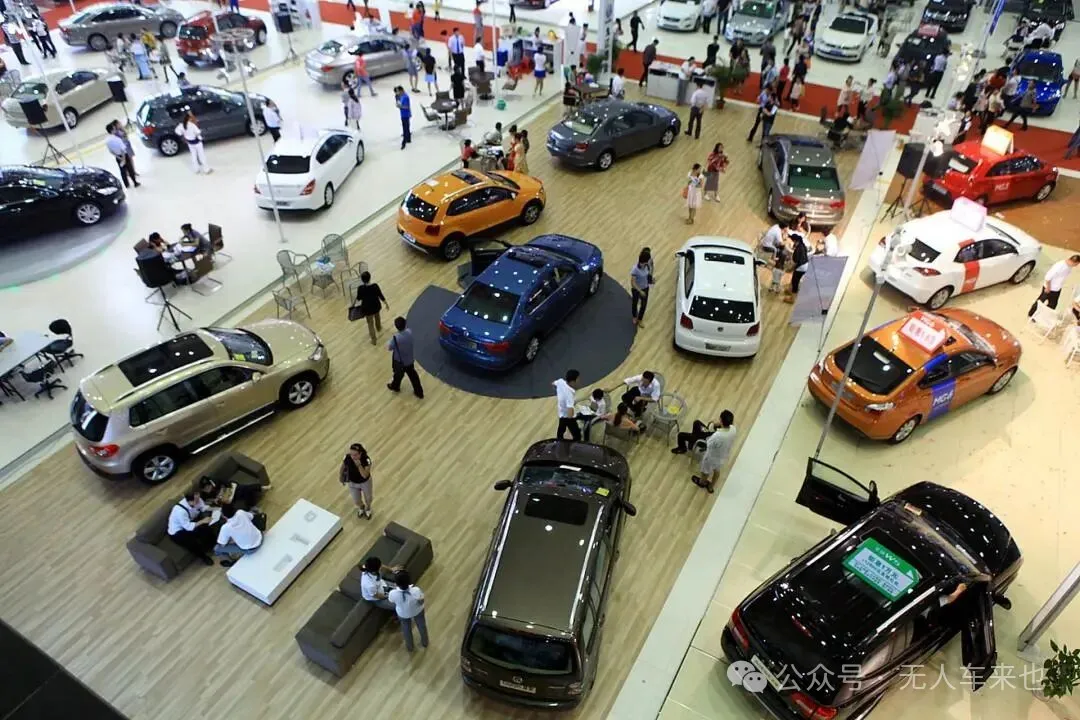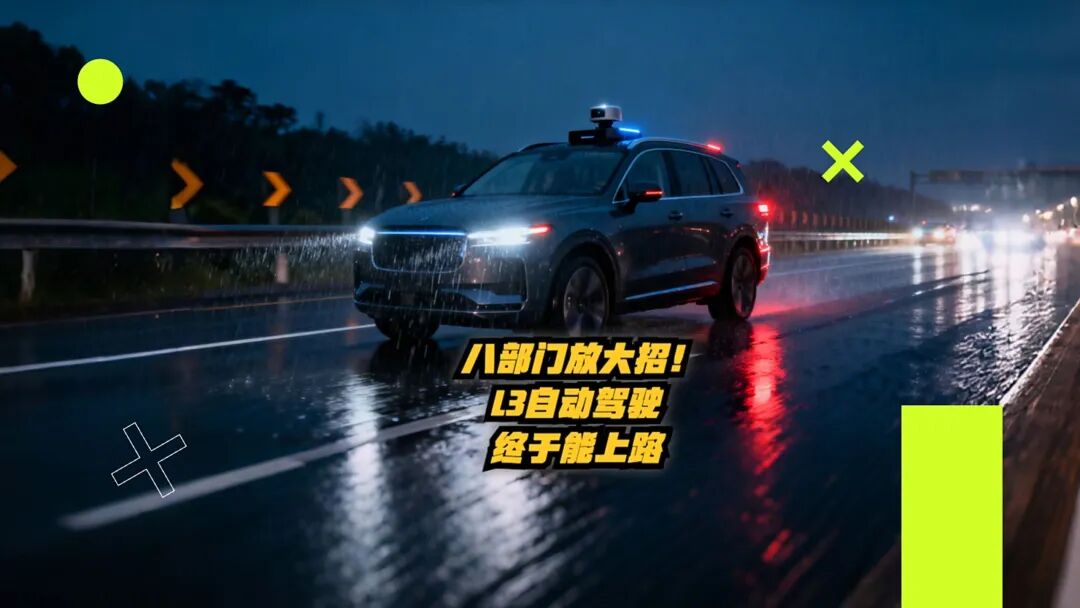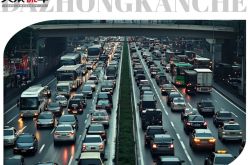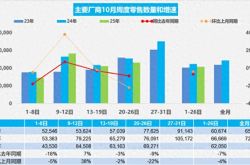Eight Departments Unite to Approve L3 Autonomous Driving! Are Industry Leaders like XPeng, Li Auto, Huawei, BYD, GAC, FAW, Momenta, and Qianli Technology Competing for a Trillion-Dollar Market?
![]() 10/11 2025
10/11 2025
![]() 617
617
Introduction
When eight departments, including the Ministry of Industry and Information Technology, jointly released the 'Work Plan for Stable Growth in the Automotive Industry', officially granting approval for Level 3 autonomous driving, it was as if the entire automotive industry heard the starting pistol of a race.
XPeng Motors swiftly adjusted its software rollout plan overnight. GAC announced the commencement of mass production for L3 models in the fourth quarter. Huawei's ADS 4.0 team entered a state of high alert, reminiscent of wartime readiness. This competition, termed by the industry as the 'Race for Tickets', has suddenly entered its final countdown.
However, beneath the celebrations lie the intricate legal maze of responsibility attribution, the additional cost burden of 30,000 to 50,000 yuan per vehicle, and a looming consumer trust crisis, all of which are weighing heavily on each automaker's shoulders.
More brutally, this is not merely a technological race but a comprehensive battle for standard-setting rights, data sovereignty, and industrial discourse power.

I. Policy Breakthrough: The 'Conditional' Survival Rule for L3
The four words 'conditionally approved' in the joint document issued by the eight departments embody profound policy wisdom.
1. Precise Demarcation of Safety Red Lines
According to the Ministry of Science and Technology's 'Ethical Guidelines for the Development of Driving Automation Technology', the responsible party for L3 will be dynamically determined based on specific scenarios.
This implies that, on the same vehicle, the driver and the system may shoulder responsibility at different times.
The game theory (strategic interaction) between this ambiguity and precise demarcation poses a new challenge for the insurance industry and the judicial system.
An actuary from an insurance company revealed that they are developing 'human-machine co-driving insurance', with premiums potentially 30% higher than traditional car insurance.
2. Invisible Barriers to Technological Thresholds
The so-called 'conditional' approval actually sets clear entry barriers for automakers:
- They must be equipped with a high-precision positioning system (Beidou-3 differential signal);
- They need to pass over 1,000 scenario tests;
- They must establish a comprehensive data recording system (DSSAD).
An engineer from an automaker admitted that the DSSAD system alone adds 8,000 yuan in costs, but this expense is deemed 'unavoidable'.
II. Auto Companies Racing: The Countdown to the End of 2025
After the policy relaxation, the L3 timelines of various automakers have suddenly become clear:
1. GAC's Aggressive Route
GAC Group announced the mass production of L3 models in the fourth quarter, becoming the first mainstream automaker to set a clear timeline.
Its secret weapon is a vehicle-road coordination system developed in cooperation with China Mobile, which compensates for the limitations of single-vehicle intelligence by deploying 200 roadside units in Guangzhou.
In the field of L4 autonomous driving, GAC and Didi Autonomous Driving will launch mass-produced L4 front-mounted models this year, with plans to officially introduce L4 autonomous driving models for individual users in 2027.
Currently, GAC Group has launched L4 Robotaxi operations in Beijing, Shanghai, Guangzhou, Shenzhen, and the Hengqin Guangdong-Macao Cooperation Zone through its subsidiary Ruichi Travel and strategic partner Pony.ai.
In terms of L4 group travel, Qiji Automobile's first L4 Robobus has entered mass production, with plans to deploy hundreds of units in Guangzhou this year.
2. Huawei's Technological Confidence
The ADS 4.0 system chose to debut on high-end models such as the Zunjie, focusing on highway scenarios.
Internal test data shows that during a continuous 1,000-kilometer drive on the Shanghai-Nanjing Expressway, the number of system takeovers has dropped to 1.2 times.
Huawei's President of Intelligent Driving, Su Qing, declared, 'We aim to be the standard-setter for L3 technology'.
Huawei Aito, Zhijie, Xiangjie, Zunjie, and Shangjie may all emerge as leaders in L3 autonomous driving in the near future.

3. XPeng's Priority on Experience
Leveraging the technological accumulation of its XNGP system, XPeng plans to deliver L3 software through OTA updates.
Its 'mapless mode' already covers over 200 cities, aiming to allow users to experience L3 first on familiar urban roads.
Feedback from test drivers indicates that the system can already achieve 'zero takeovers' during commuting scenarios on Shenzhen's Beihuan Avenue.
4. BYD's Ambition for Popularization
BYD's 'intelligent driving for all' strategy attempts to bring L3 functions to models priced between 100,000 and 200,000 yuan.
Through self-developed chips and algorithm optimization, BYD has controlled the cost of its intelligent driving system within 15,000 yuan, a figure that has shocked its peers.
III. Technological Routes: The Ultimate Showdown Among Three Schools
Behind the L3 competition lies a life-and-death struggle among three technological routes:
1. Huawei/Momenta's 'End-to-End' Revolution
Relying on reinforcement learning to enable algorithms to evolve autonomously, it's akin to giving AI the driver's seat to learn on its own.
In tests conducted in Suzhou, the system developed by Momenta in cooperation with Mercedes-Benz improved its urban road recognition accuracy from 85% to 96% in just three months.
2. XPeng/Li Auto's VLA Large Model
Integrating vision, language, and driving behavior, it enables vehicles not only to 'see' but also to 'understand'.
In real-world tests, the system can accurately recognize hand gesture instructions such as 'construction ahead, please detour' and even understand voice instructions like 'follow closely behind that black sedan'.
(For reference, please click:
'Li Auto Splits Its Autonomous Driving Department into 11 Parts! Li Xiang's 'AI Transformation Plan', with the VLA Model as the 'Secret Weapon'? Can It Outpace Tesla?')
3. The Collective Intelligence of the Vehicle-Road Coordination School
Automakers such as Changan and SAIC are betting on C-V2X technology to achieve beyond-line-of-sight perception through roadside equipment.
Tests in Xiong'an New Area show that this approach can reduce accident rates by 70%, but the cost of road reconstruction per kilometer is as high as 2 million yuan.
IV. Capital Covert Battles: The Power Game Behind the Merger and Acquisition Frenzy
The L3 market access has not only been an opportunity for rapid development for automakers but has also triggered a new round of capital restructuring:
1. Mercedes-Benz's Dual-Track Bet
Mercedes-Benz is not only jointly developing an L3 system with Momenta but has also invested in Qianli Technology.
Insiders revealed that this 'two-legged' strategy is to hedge against technological route risks. 'We cannot bet our future on a single solution,' they said.
2. FAW's Self-Reliance Awakening
The acquisition of Zhuoyu Technology is seen as a desperate counterattack by traditional automakers.
FAW Group acquired a 35.80% stake in Shenzhen Zhuoyu Technology through capital increase and equity acquisition, becoming its largest single shareholder and jointly controlling the company with the original controlling party. The transaction was publicly announced by the State Administration for Market Regulation on September 22, 2025.
The President of FAW's Intelligent Driving Research Institute stated, 'Mastering core algorithms is essential to avoid being held hostage'.
After the acquisition, FAW's L3 R&D cycle was shortened from 36 months to 24 months.
3. Geely's Ecological Layout
By incorporating Qianli Technology into its intelligent driving hub, Geely has achieved a closed loop from chips and algorithms to vehicle manufacturing.
This vertical integration model has reduced the cost of its L3 system by 20% compared to the industry average.
V. Real-world Challenges: The Three Major Obstacles to L3 Popularization
Despite the promising prospects, the large-scale adoption of L3 still faces severe challenges:
1. The Legal Maze of Responsibility Attribution
A partner at a Shanghai law firm pointed out:
'The attribution of responsibility in L3 accidents will be extremely complex. For example, if the system requests a takeover while the driver is on the phone, how should responsibility be divided? This requires a completely new legal framework'.
2. The Transmission Dilemma of Cost Pressures
The L3 system increases the cost of a single vehicle by 30,000 to 50,000 yuan, a premium that is sufficient to deter mainstream consumers.
A marketing director from an automaker admitted, 'We may first introduce it on high-end models, following a 'top-down' penetration strategy'.
3. The Long-Term Project of Trust Building
Tesla's FSD achieved 1.7 million user-miles with zero accidents in North America, setting a benchmark for the industry.
However, in China, consumer trust in autonomous driving still needs time to cultivate.
A survey showed that only 35% of consumers are willing to pay extra for L3 functions.
VI. Future Outlook: The New World of Intelligent Driving in 2026
By 2026, we may witness the following scenarios:
1. The Insurance Industry Revolution
'Pay-per-use' insurance models become mainstream, with L3-enabled car owners enjoying premium discounts, while those who frequently request takeovers face premium increases.
2. Road Resource Reconstruction
Some highways establish 'L3-only lanes', enabling higher-density traffic flow and lower energy consumption.
Tests show that L3 fleet driving can reduce air resistance, cutting energy consumption by 15%.
3. New Business Models
Automakers shift from 'selling hardware' to 'selling services', with L3 functions adopting a subscription model at 500-1,000 yuan per month.
A new energy vehicle brand predicts that software service revenue will surpass hardware profits within three years.
In conclusion, the WeChat public account 'Driverless Car Is Coming' believes:
When the policy gives the green light to L3, automakers are not just facing an opportunity for technological upgrades but an ultimate battle for discourse power over future mobility.
In this competition, the winners will not only write commercial legends but also the traffic rules of the next era.
What do you think, dear?
#DriverlessCarIsComing #Driverless #AutonomousDriving #SelfDrivingCar








